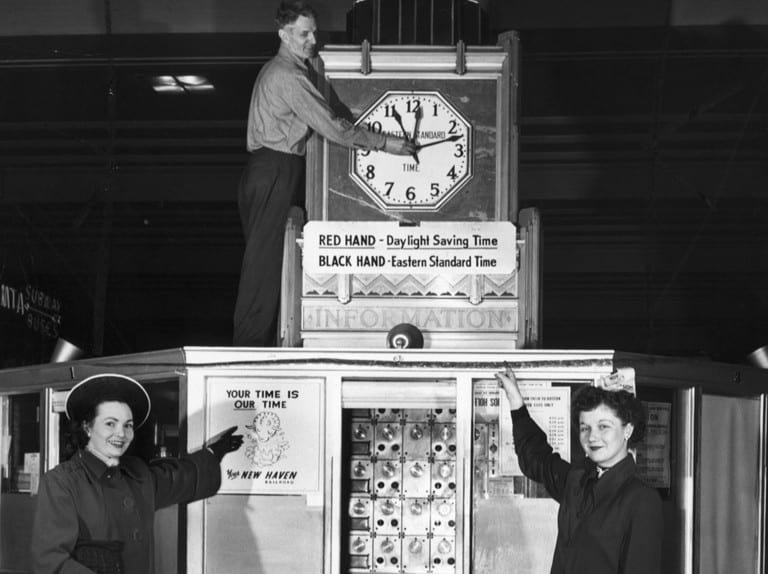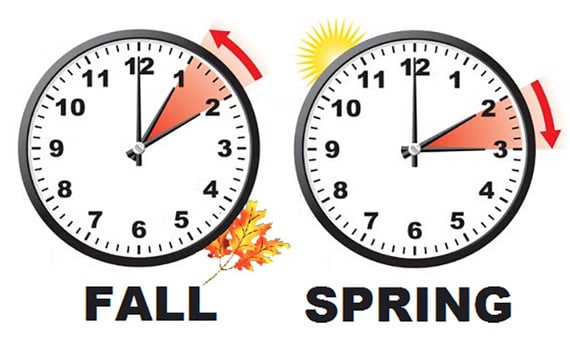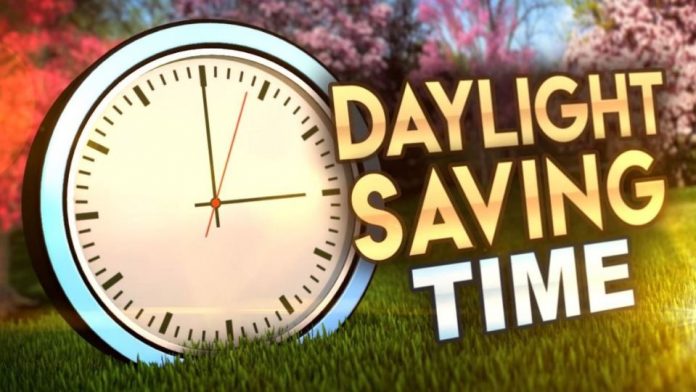Before the 1880’s, there was no standard measure of time. Localities adopted their own schedules, often based on atmospheric conditions. It was the railroad system that created the first international time zones in 1883 in order to standardize their schedules around the world. One year later, a world-wide standard for time was created at the International Prime Meridian Conference held in Washington. Now everyone, everywhere, was on the same time schedule.
History of Daylight Saving Time

It was Benjamin Franklin who first suggested the idea of changing the clocks to make better use of daylight. He noted in a 1784 essay, “An Economical Project for Diminishing the Cost of Light”, that people could save money on candles and tallow if it was light longer in the evenings. It would be over 100 more years before anyone paid attention to that essay. An Englishman, William Willet, created a pamphlet entitled, “The Waste of Daylight”, where he suggested changing the clocks to maximize the use of sunlight. His idea was rejected in 1908 by the British House of Commons.
The year 1916 brought an act by British Parliament to create “British Summer Time”. This Act established the turning of clocks ahead one hour during the summer months to get the most benefit out of daylight. It was soon discovered that the changing of the clocks also saved on energy costs. This would become increasingly important as countries entered World War I. In 1918, the United States adopted a form of daylight saving time as an effort to save energy during the war. It lasted seven months and then was repealed due to lack of support.
Uniform Act of Time Law

During World War II, the U.S. again imposed a daylight saving time to save energy costs. It lasted the duration of that war. From 1945-1966, states and localities within the U.S. made their own decisions about whether or not to change clocks. In 1966, the U.S. government handed over the responsibility of time zones to the Department of Transportation. (DOT). The DOT established the Uniform Act of Time of 1966. This law started Daylight Saving Time (DST) on the last Sunday of April and ended it on the last Sunday of October. Local governments could pass an ordinance to be excluded. The U.S. dates for DST were adjusted in 1986 and again in 2005. Currently, clocks in the U.S. are moved forward on the second Sunday in March and moved back the first Sunday in November.
What are the Benefits of Daylight Saving Time?
The original idea behind DST was that the sun would be out longer in the evenings when people are awake, and would be come up later in the mornings when people are asleep. Studies have proven or dis-proven some additional benefits for Daylight Saving Time

- Energy Savings- The Department of Transportation studies indicate that enough oil is saved to justify the use of DST. Others would argue this offset by the energy used by those living in warm climates to cool their homes during summer afternoons and evenings.
- Fewer Traffic Accidents- The Department of Transportation has conducted numerous studies to determine whether DST has an effect on traffic accidents by allowing more sunlight during the hours people are traveling home from work or school. The findings suggest fewer accidents in the afternoon/early evening hours. Other major studies, however, show an increase in the number of accident in the darker morning hours, especially the first Monday morning after clocks are turned ahead.
- Less Crime– There may also be a link to less crime and DST. More crimes are committed in the darkness, and making dark later at night may reduce crime.
Over 70 countries observe DST. China, Japan and India are the main industrialized nations who do not adjust their clocks. For a complete list of who observes Daylight Saving Time, check out this listing
Some people like DST because it offers more daylight for trick-or-treaters and those voting in the November elections. Farmers often dislike it, saying the livestock takes weeks to adjust to the new schedule because it goes against the animals’ internal clock.
Whether opposed to, or in favor of, the observation of Daylight Saving Time, change those clocks or risk being too late or too early for an upcoming event. Consider a newer tradition and change smoke detector batteries when changing the clocks. All studies agree that working smoke detectors save lives.


















